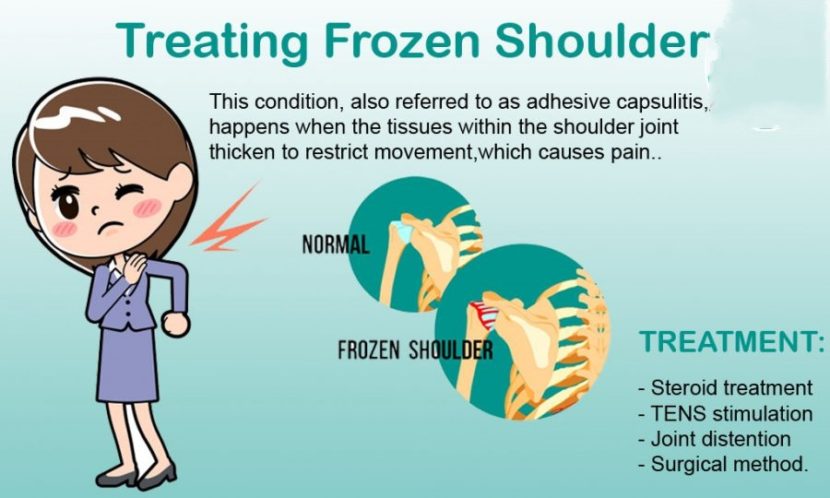
In addition to physiotherapy exercises, your doctor can recommend over-the-counter medication to help you get relief. You can also speak to your doctor about other options. These exercises should be done under the supervision of a qualified physiotherapist to reduce the risk of exceeding your limits and causing further injury.

Some gentle range of motion exercises you should do include the pendulum stretch, towel stretch, finger walk, cross-body reach and armpit stretch. The treatment program will typically involve regular stretching and strengthening exercises to restore flexibility and mobility without straining the shoulder.

This is the most common and main part of treatment for a stiff shoulder. Below are a few ways to release a stiff shoulder. Once a clinician has conducted a physical exam, they may recommend several options to help with the pain and improve shoulder mobility.

Gender: Women make up 70 percent of people with this condition.Common risk factors for the disorder are: However, certain groups of people are more likely to develop the condition. The exact cause of frozen shoulder is still unknown. Here is what to know about the condition, how to relieve pain and restore your shoulder’s normal range of motion. Fortunately, most stiff shoulders can be managed through non-surgical treatments. This is why it is important to get the appropriate treatment. If left untreated, this condition can get worse and result in disability. The pain, discomfort and limited motion that come with a frozen shoulder can be frustrating.

population suffer from frozen shoulder (also known as adhesive capsulitis) at some point. It is estimated that between two and five percent of the U.S.


 0 kommentar(er)
0 kommentar(er)
